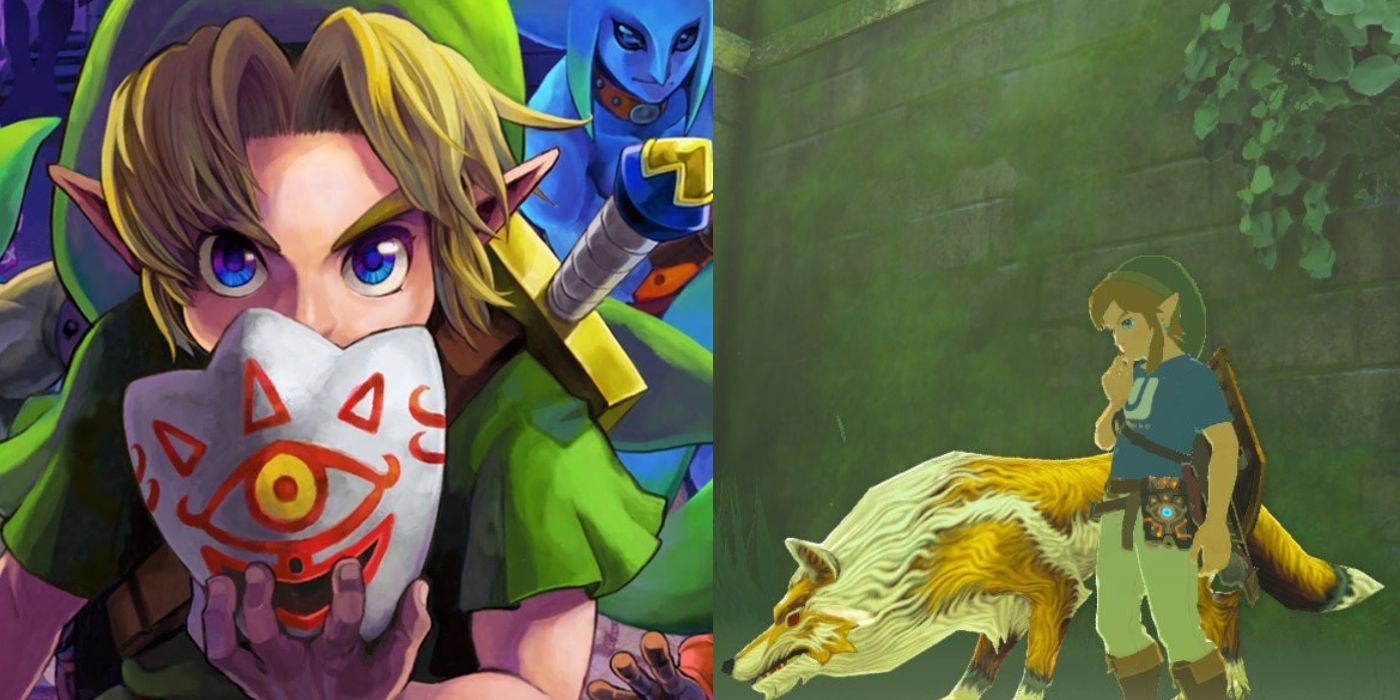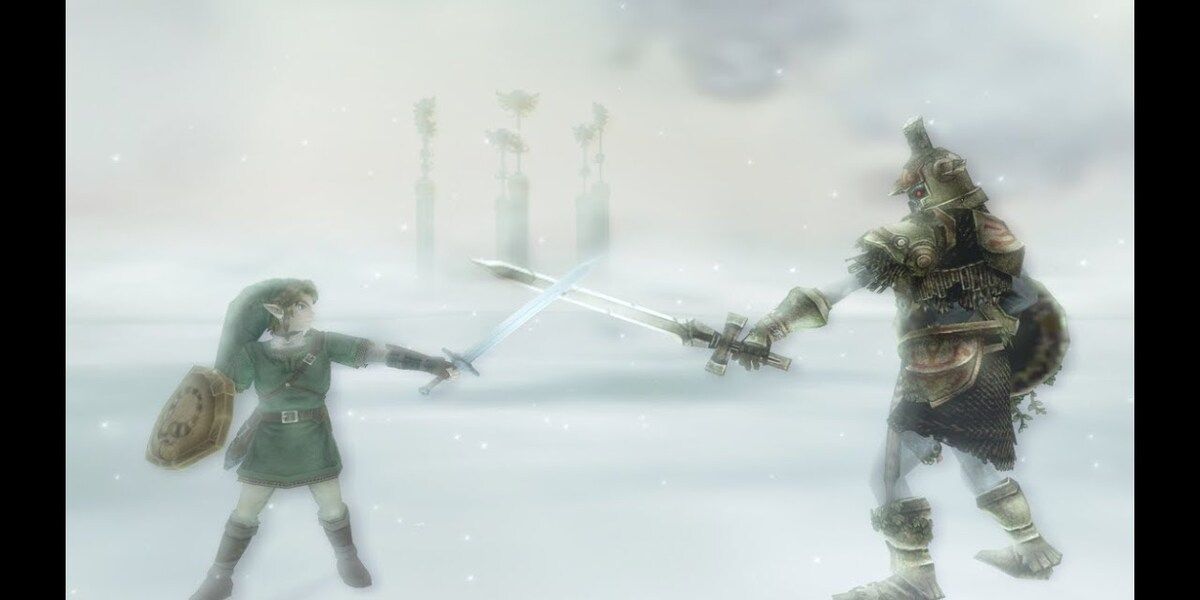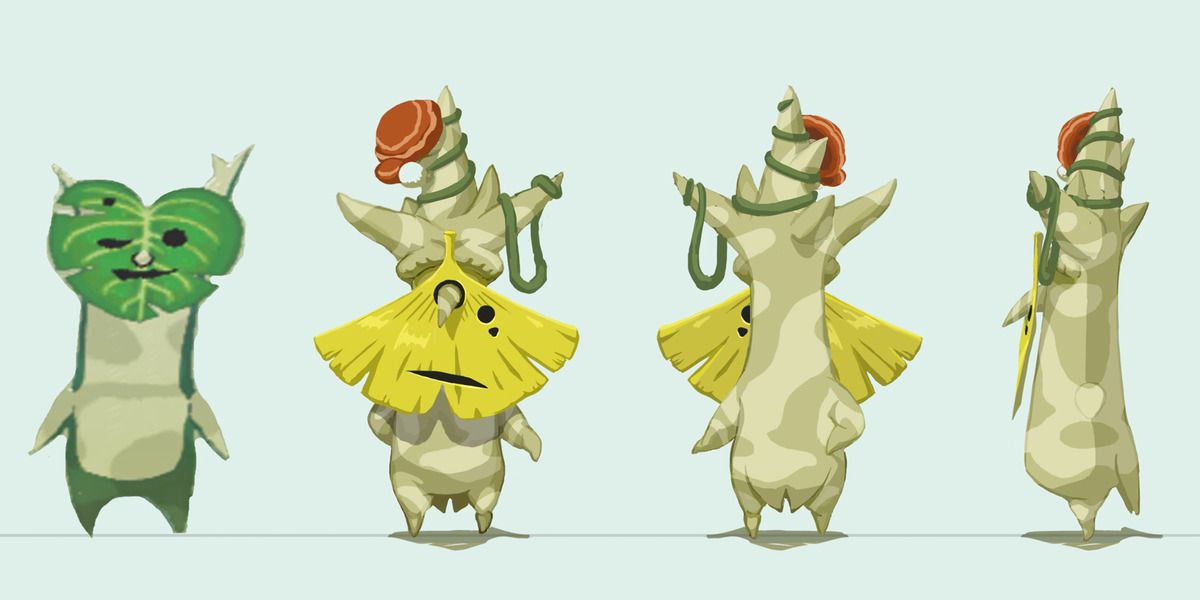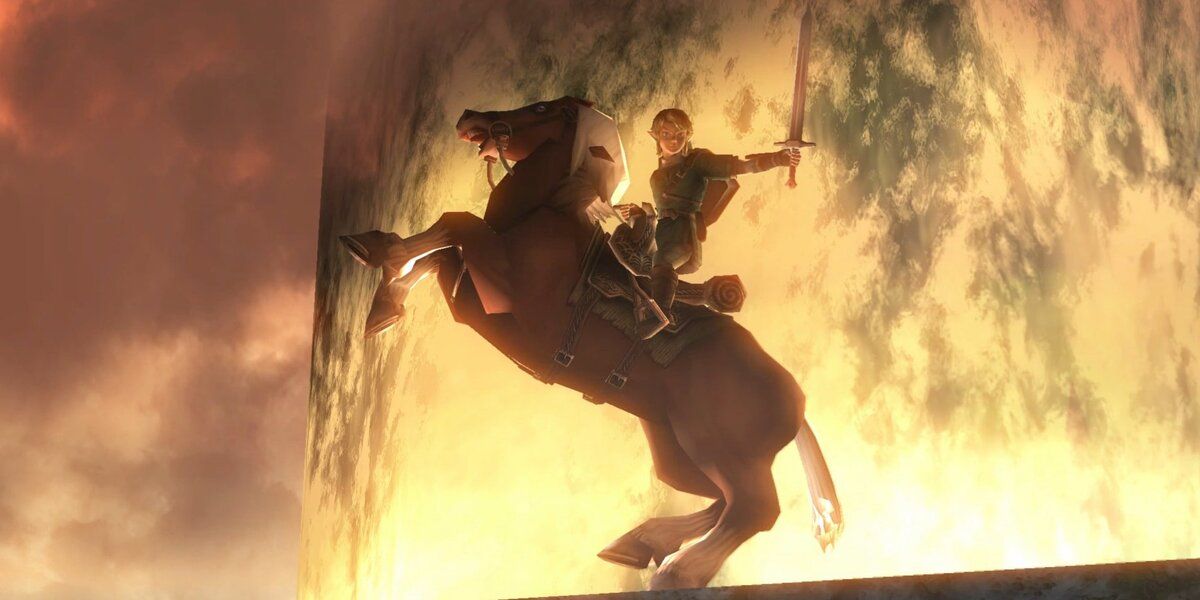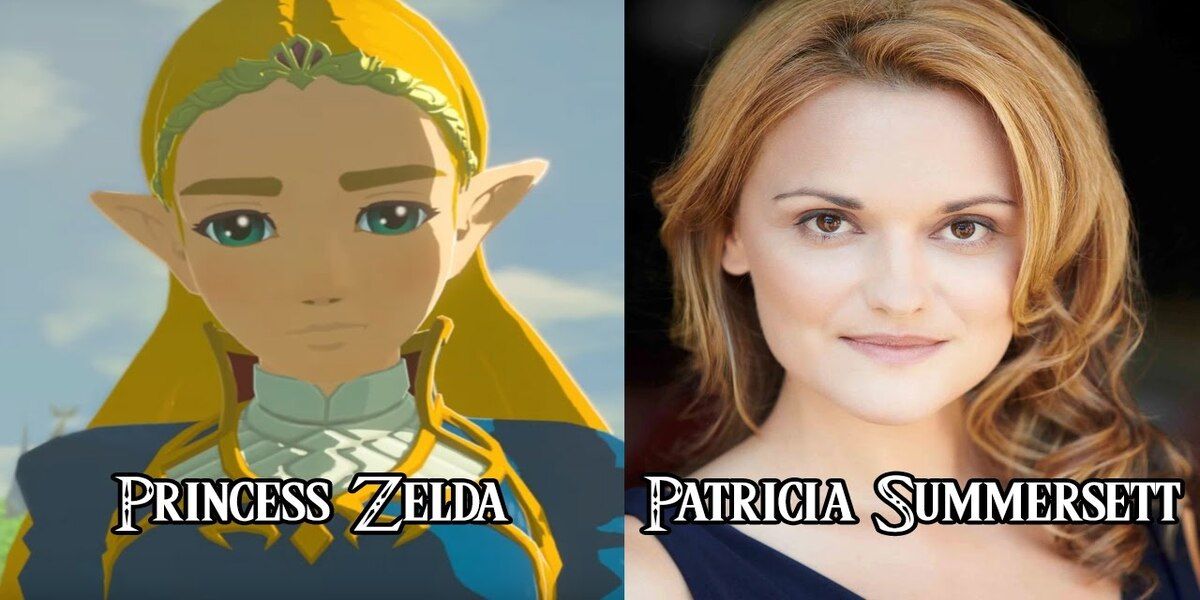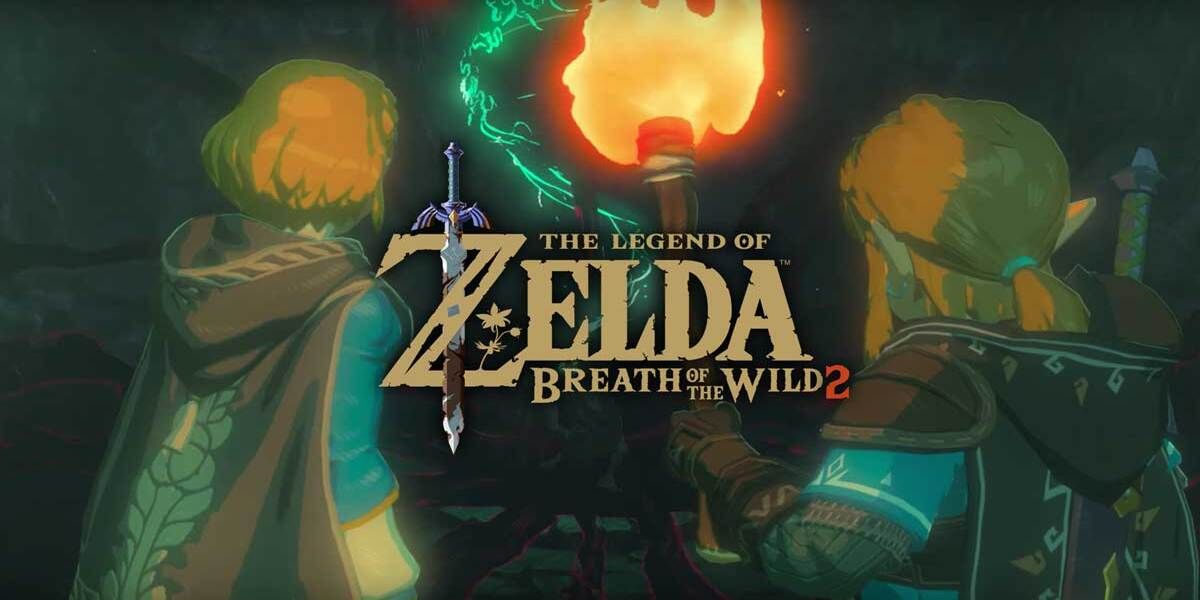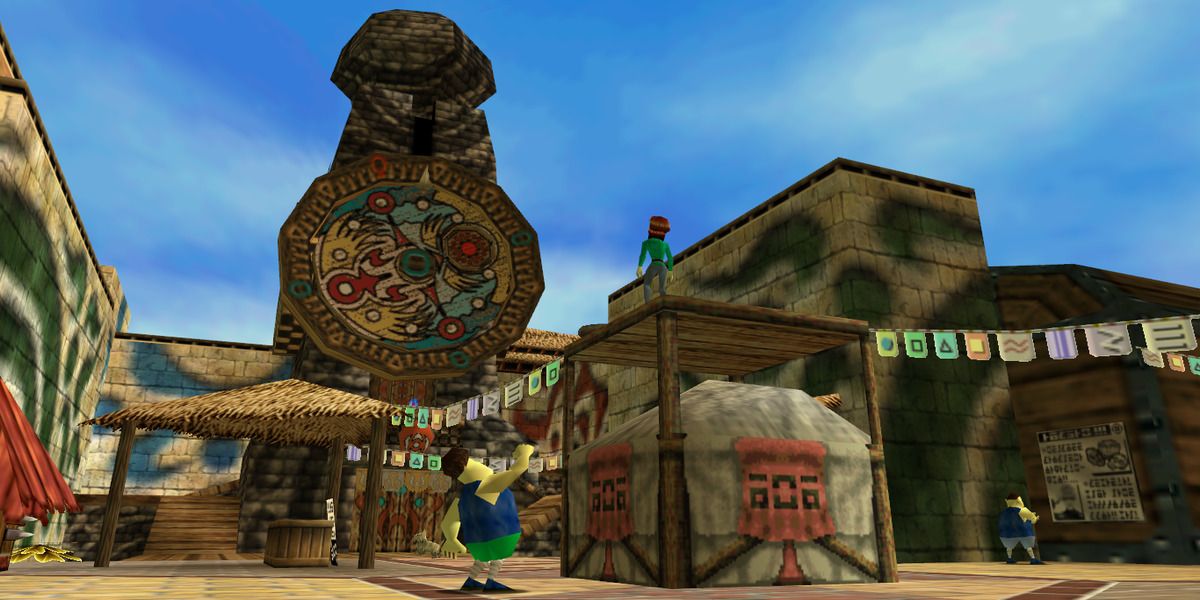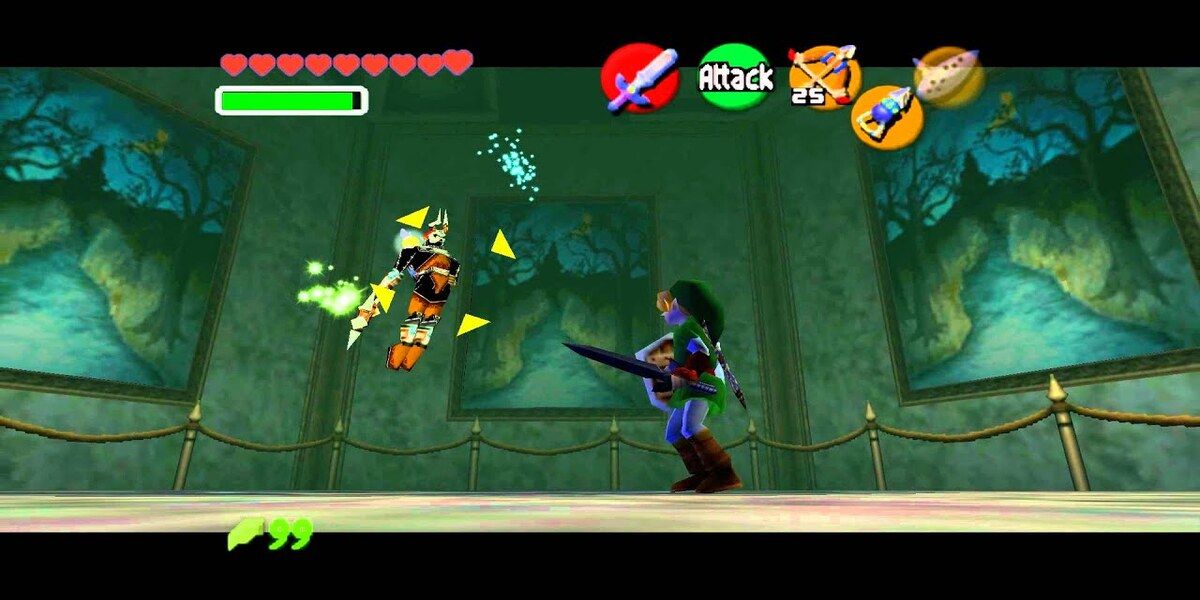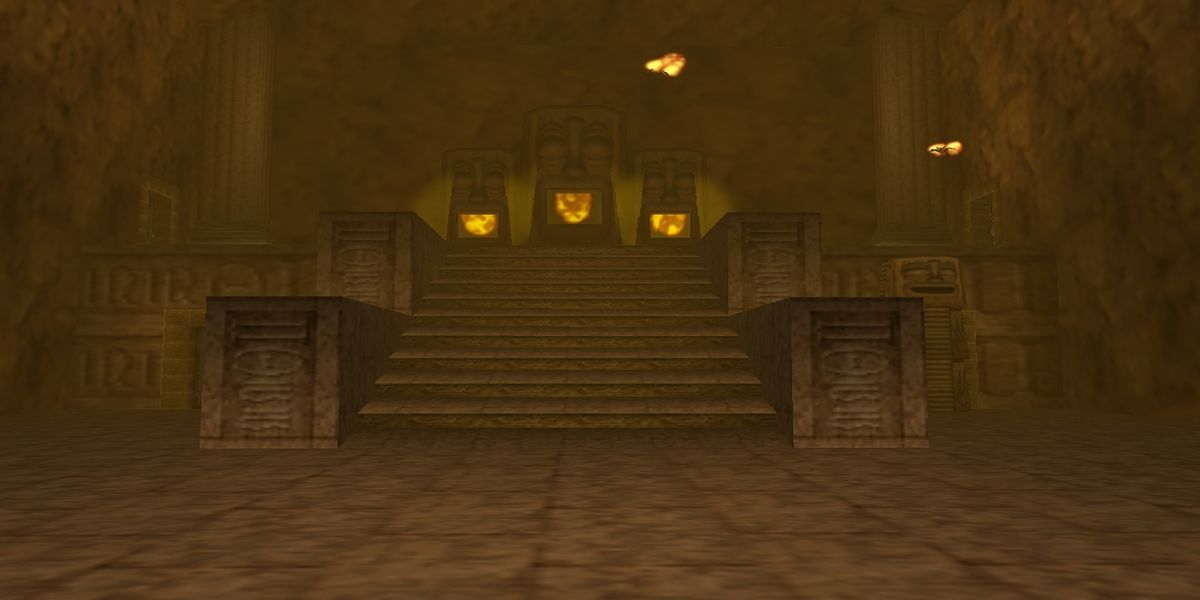Regardless of whether it is a film, a book, or a video game, any popular piece of media will have numerous theories and rumors from their dedicated fanbase. The Legend of Zelda series is no different.
As would be expected in a series that has spanned nearly 30 years, these rumors have come from many different places. Some were discussed on fan forums and theorist YouTube channels. Whereas others were debated on the pre-internet forum known as the school playground. A place where some learned how to ride Epona in Ocarina Of Time. While others would end up spending hours trying to play as Mario in A Link to the Past because their friend's brother-in-law said that their sister could totally do it.
While many Zelda rumors have been far fetched, such as Link being dead in Majora's Mask or Doomguy being Link from the future, confirmation of some theories has occurred though.
8 Hero's Shade Is Link From Ocarina Of Time
Hero's Shade is a character from The Legend of Zelda: Twilight Princess. The character teaches Link a variety of new sword and shield techniques, such as the Great Spin and the Ending Blow. The Legend of Zelda's encyclopedia Hyrule Historia confirmed a long-rumored theory that Hero's Shade is a spirit of Link from Ocarina Of Time and Majora's Mask.
Hero's Shade falls under the Child Era category of the section The Hero Is Successful from the Offical Zelda Timeline. A spirit of the long-deceased Hero of Time, Hero's Shade waited for centuries to teach a descendent his legendary skills. Hero's Shade's motivation to teach his descendent came from his disappointment in not being recognized for his heroic efforts during his life. By teaching his skills to Link in Twilight Princess he was finally able to get the acknowledgment that he craved.
It is also theorized that Hero's Shade has a gravestone in the Castle Gravestone. As a tombstone in the graveyard states "The cursed swordsman... sleeps before... the sacred tree.". However, this has never been confirmed as belonging to Hero's Shade.
7 The Korok Are An Evolution Of The Kokiri
The Kokiri are the inhabitants of Kokiri Forest, Ocarina of Time's opening area. Their human-like appearance vastly differs from the Korok's form. Which is more akin to a small living tree. However, Nintendo confirmed that Wind Waker's Korok are an evolved state of the Kokiri.
Before this confirmation, rumors circled with the following line of dialog from The Great Deku Tree being the key clue;
"Once upon a time, long ago, the Koroks took on human forms, but when they came to live on the sea, they took these shapes. Now they fear people... but to me, they will ever be my cherished little children."
6 Twilight Princess' Shift In Style
At Nintendo Space World in 2002, fans got their first taste of the next Zelda title The Legend of Zelda: The Wind Waker and they weren't happy. The cartoony graphics instilled in gamers their worst fears. That the Zelda series was going to switch its target audience to predominantly children, simplifying the gameplay and puzzles in the process.
Wind Waker proved many gamers wrong upon release and was viewed as one of the series' best entries shortly after release. However, players' excitement levels still went through the roof when rumors began circulating that the next Zelda game would have a more mature setting.
These rumors were proven correct when the trailer for Twilight Princess caused fans at E3 to erupt in cheers, as footage of a much darker Zelda game played on the big screen. Ironically, fans retrospectively agree that the Wind Waker's graphics have aged better than those of Twilight Princess.
5 Voice Acting In Breath Of The Wild
Dungeons, a graveyard, and a certain Master Sword are just a few things that players can almost guarantee will be in a Zelda game. However, the Nintendo Switch launch title Breath of the Wild shocked fans in 2017 with a trailer that featured voice actors speaking over the footage. The voice acting wasn't just for the trailer either, with it being implemented into the game itself.
Voice acting in a video game may not seem like much of a shock. But like many Nintendo games, voice acting in the Zelda series was a rare occurrence up until this point. So much so that murmurs amongst fans that voice acting would feature in the next Zelda game, were continuously dismissed.
4 Breath Of The Wild 2
Similarly to voice acting, it's not exactly ground-breaking that a video game will have a sequel. Meaning rumors of Breath of the Wild 2 were often shut down. Direct sequels in The Legend of Zelda series have been rare. Zelda II: The Adventure of Link is still the series' only direct sequel. Despite being a direct sequel, its gameplay vastly differed from its predecessor The Legend of Zelda as well as all other Zelda titles to this date.
E3 2019 confirmed a sequel for Breath of the Wild, with an official trailer putting doubts to rest.
3 Termina Is A Real Place
Majora's Mask's world of Termina was believed to be a dream-like place for many years. A theory supported by the games bizarre story and recurring characters from Ocarina of Time. It wouldn't have been the first time that a Zelda game took place in a dream-state either. 1993's Link's Awakening already used the concept.
A popular theory also suggested that Link was killed by his fall at the start of the game. With Termina being a purgatory-like place. Some fans also believe that the game's five key areas being representative of the five stages of grief. Clock Town was believed to be denial, the Deku Palace was anger, Snowhead was bargaining, Great Bay was depression, and Ikana Valley was acceptance.
However, these theories were put to bed when Legend of Zelda producer Eiji Aonuma confirmed that Termina was a real, physical location.
2 Ties Between The Phantom Ganon Fight and Super Mario 64
Ocarina of Time and Super Mario 64 are undoubtedly the Nintendo 64's most iconic titles. Fans of both games soon noticed a connection between the titles. The connection being Mario's level portal paintings, and Zelda's Phantom Ganon fight. The portal paintings in Mario 64 originally being intended for Ocarina of Time, is an idea that fans correctly theorized.
Developers at the time didn't believe that the Nintendo 64 could handle the open design of Ocarina of Time's world. Therefore, the original plan was to have Ganandorf's Castle acting as Peach's Castle did in Super Mario 64. With paintings transporting players to the games key locations.
The Phantom Ganon fight is a left-over design from this scrapped concept. Perhaps even more surprisingly, the concept of Link riding a horse was originally intended for Mario. The developers decided early on though that the concept was better suited to Link.
1 The Fire Temple's Soundtrack
In early versions of Ocarina of Time, it was believed that the Fire Temple's soundtrack featured an Islamic prayer. Muslim fans of the Zelda series soon confirmed this to indeed be the case. Later versions of the game removed the prayer, which Nintendo spoke about in 2012. They simply stated that the prayer was removed (along with some other religious material) as religious symbolism was never intended to appear in the game. The developers were unaware of the music's origin when they included it in the game.

